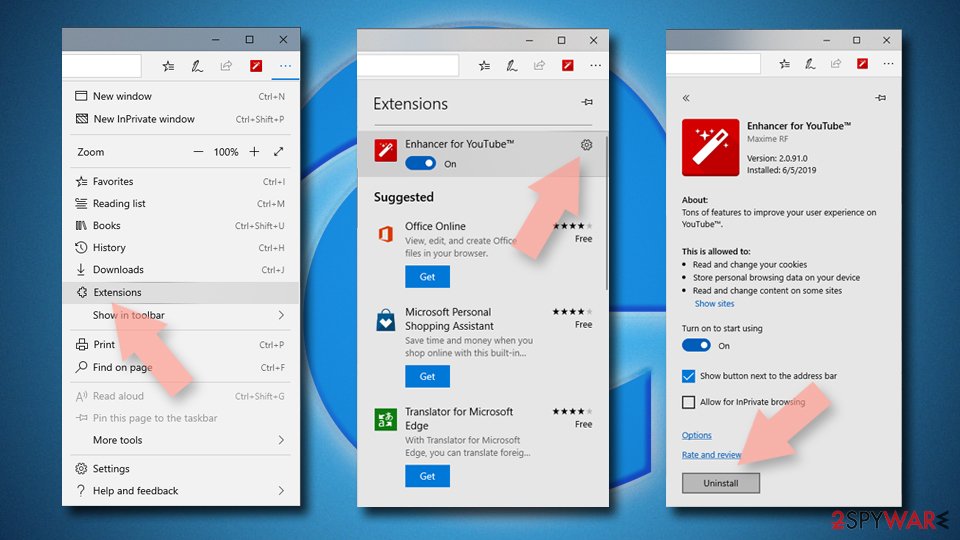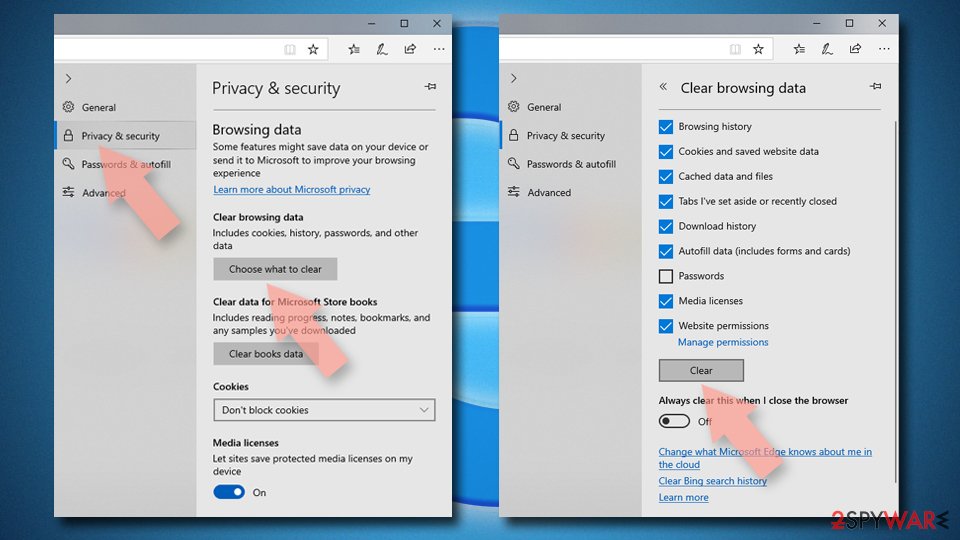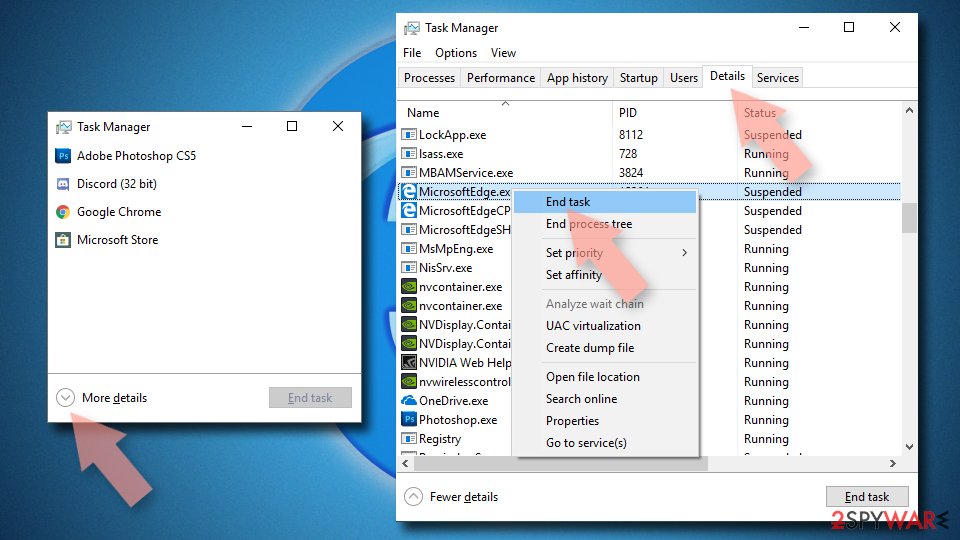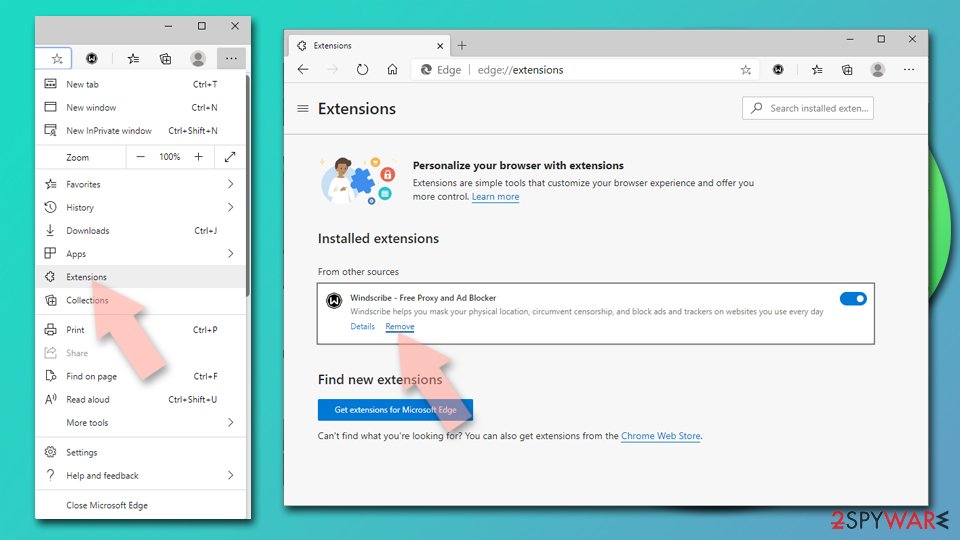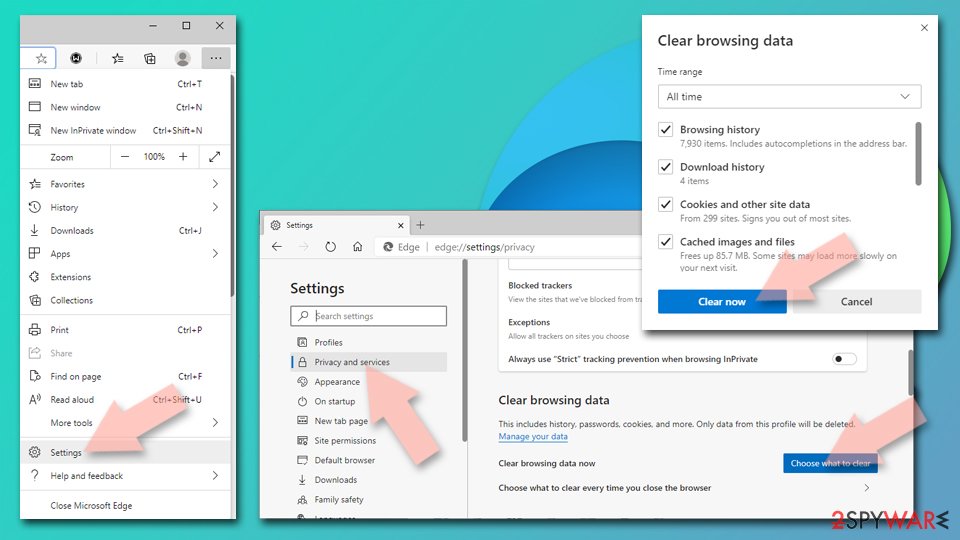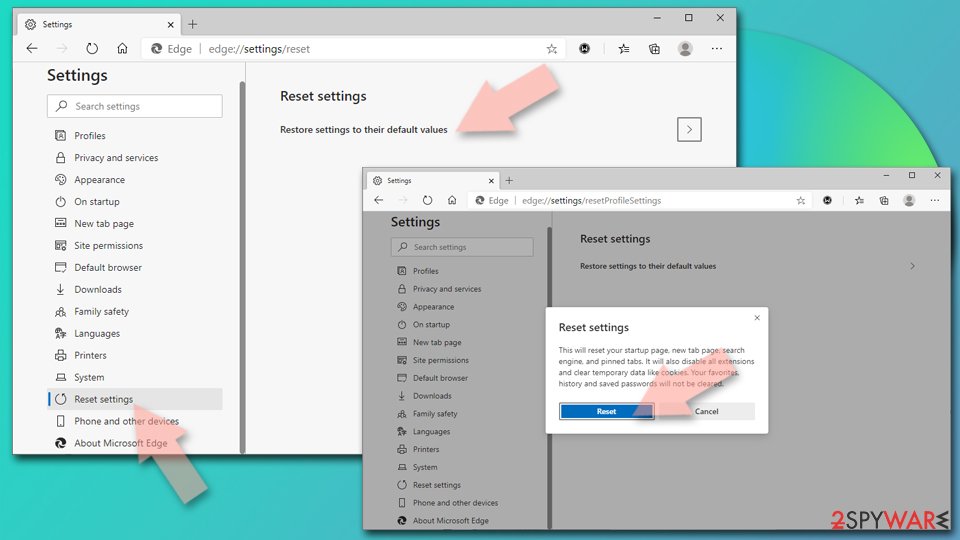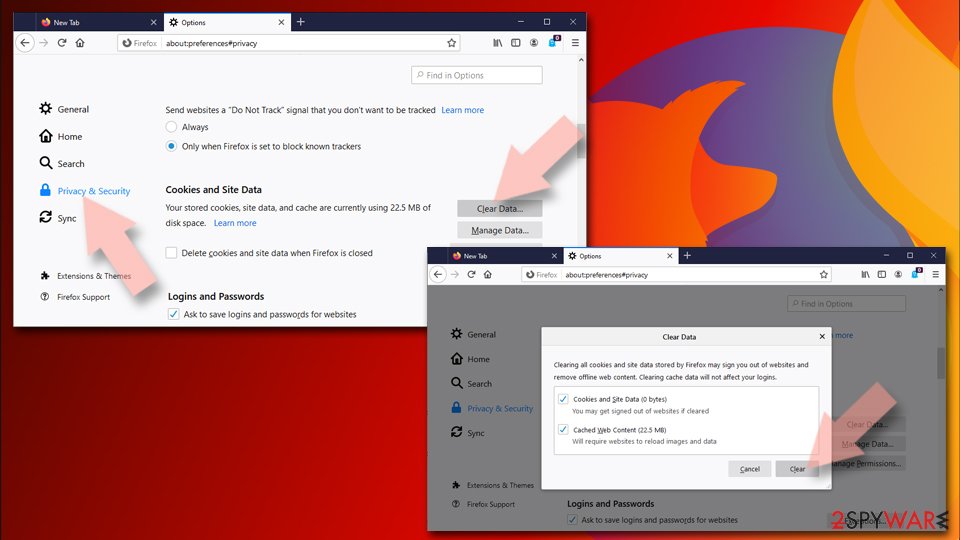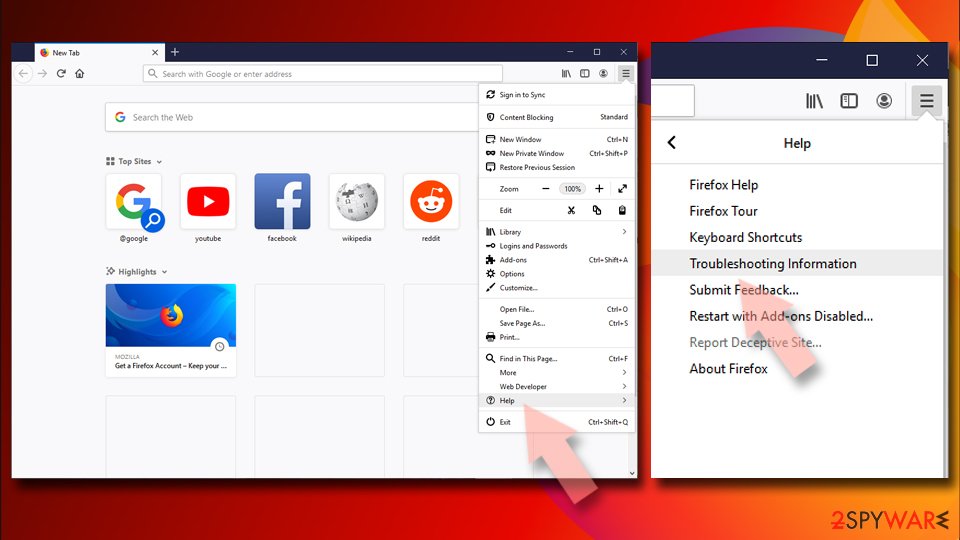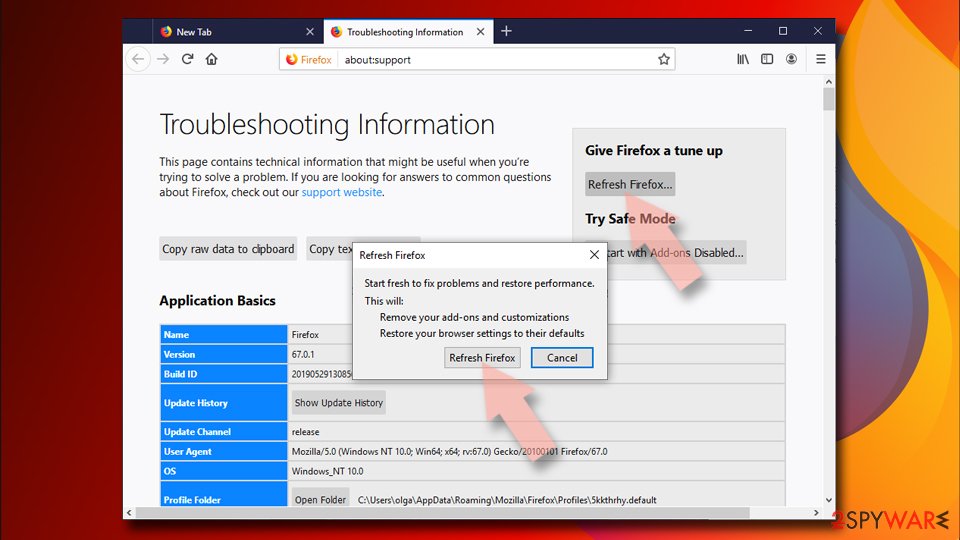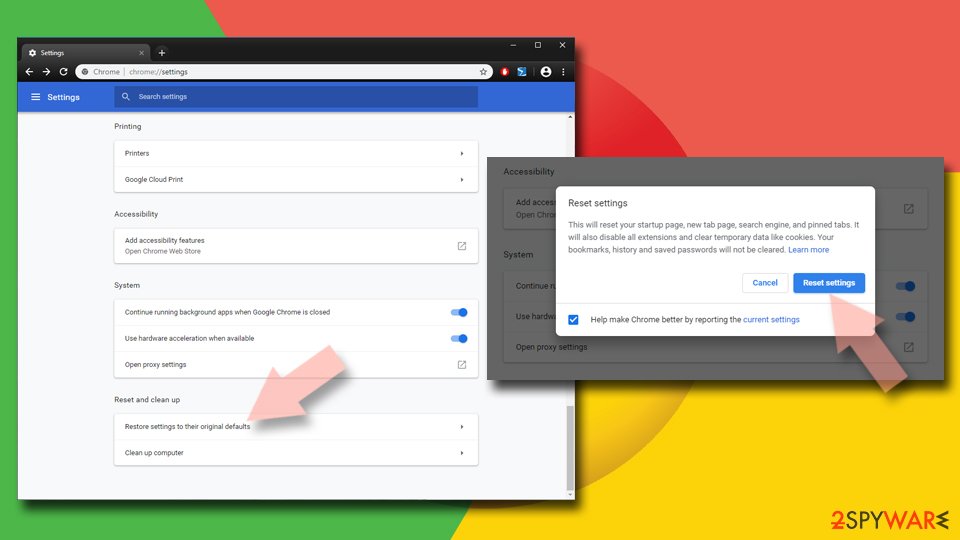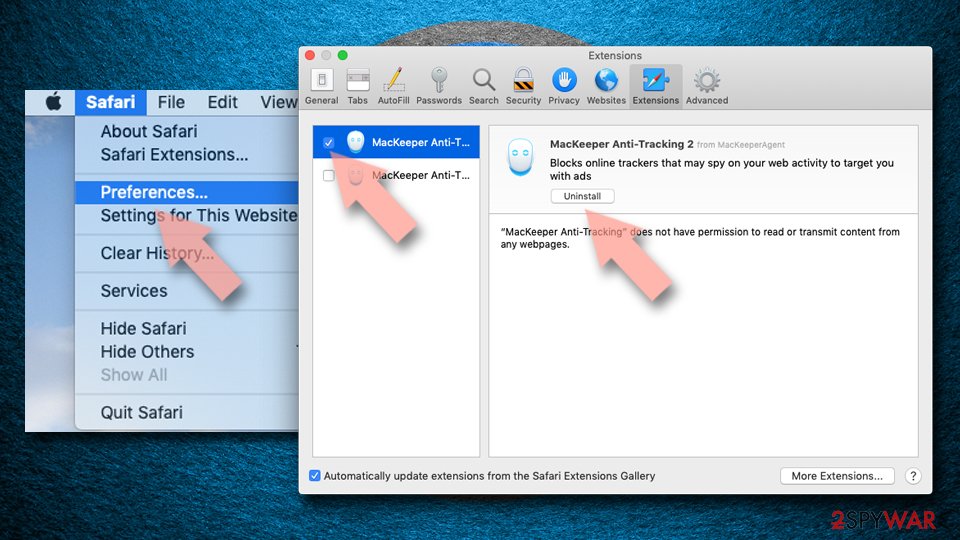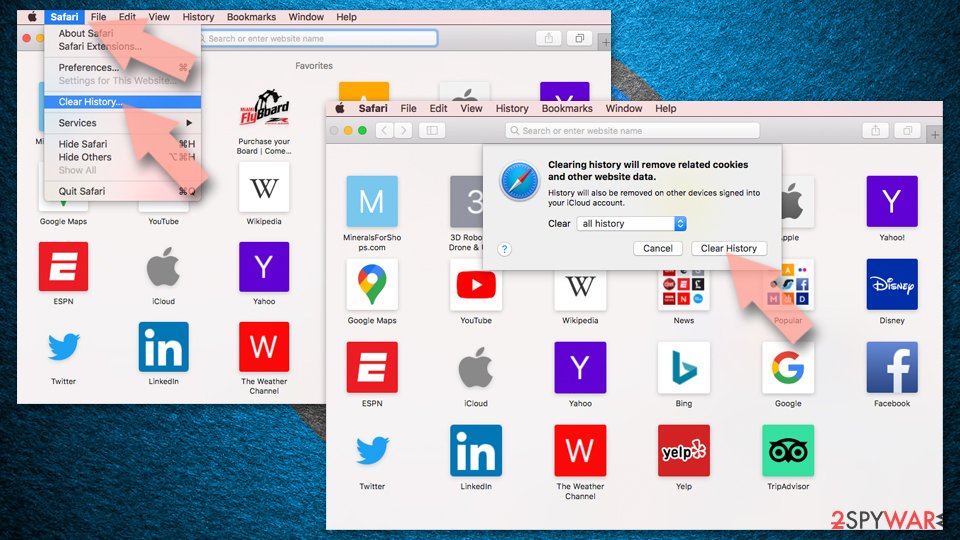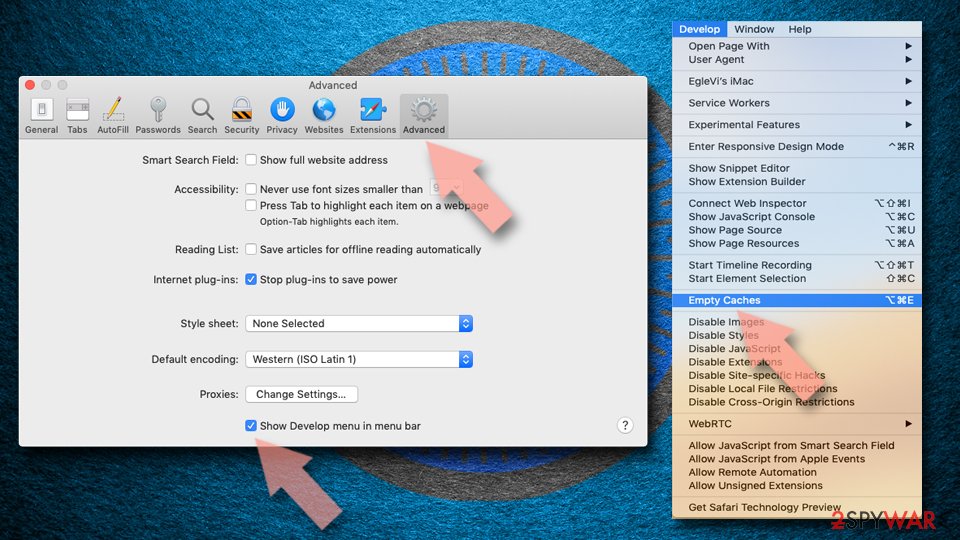Bettersearch.co (Improved Instructions) - Free Guide
Bettersearch.co Removal Guide
What is Bettersearch.co?
Bettersearch.co is the app that targets to hijack your usual web browser

Bettersearch.co is a browser hijacker[1], which disguises itself under the appearance of a search engine. Despite the attempt to mimic well-known web directories like Google, Bing, or Yahoo, it is still categorized as a fraudulent search engine or a potentially unwanted program (PUP). Since security experts suggest avoiding using its services, we aim to provide a brief explanation of the reasons why.
Evaluating the reliability of this search engine, you should know that it is designed to collect various information about your browsing routine. The gathered data might vary from IP address to your e-mail address depending on the information you submit in the search bar.
| Name | Bettersearch.co |
|---|---|
| Type | Browser hijacker, potentially unwanted program |
| Distribution | Freeware installations, other PUPs, malicious sites |
| Issues | Redirects, sponsored content, suspicious pop-ups |
| Elimination | You can run anti-malware tool and remove the intruder properly |
| Repair | Rely on tools like FortectIntego and fix any issues with the system |
This feature of this search engine is programmed to use the collected data in providing advertisements on your frequently visited pages. It helps to trick you into clicking on those ads and generating pay-per-click revenue for the developers. Sponsored content and third-party ads can also appear on the screen. In my professional opinion, it is quite a strong reason to start Bettersearch.co removal right away.

However, the browser hijacker not only infiltrates tracking cookies on your browser, but also specific plug-ins, extensions, and add-ons. They help this PUP initiate certain modifications to set hxxp://bettersearch.co/ as your default search provider. It means that every time you launch your browser or open a new tab, you will be redirected to the fraudulent search engine and prevented from resetting the browser parameters.
Note that this unreliable program might lead to suspicious pages and proliferate malware infections on your PC as well[2]. If you are tired of the continuous redirects, you can employ professional security software such as SpyHunter 5Combo Cleaner, Malwarebytes to get rid of the browser hijacker automatically.
We recommend this program since it is the quickest and safest way to remove Bettersearch.co virus from your system. To reach the best result, you can use the manual termination guide as well. It is presented at the end of this article, don’t forget to check.
PUPs hide in the installers of the freeware
Sadly, you have probably infiltrated the browser hijacker by yourself since it is bundled with third-party applications. If you wonder how, be aware that the developers invented a sneaky way to stealthily infect your PC — they offer Quick or Recommended settings and do not entirely disguise the information about PUPs in them.
Therefore, you can protect your computer from hijack by always choosing Advanced or Custom options. This way you will be able to detect the additional downloads if you follow the installation procedure carefully. The most important step is not to forget to unmark the pre-selected boxes which allow infiltrating unknown applications on your system.
The best method to uninstall the hijacker
Experts from NoVirus.uk[3] warn that due to the specific extensions which come along with the browser hijacker it is almost impossible to remove Bettersearch.co virus for a regular computer user. We suggest you use an antivirus program to circumvent the system of the PUP.
It is the simplest way since all you have to do is to download security software from the verified developers and let it scan your files thoroughly. Additionally, we attach manual Bettersearch.co removal instructions to guide you through the termination process and help reach the best result — a hijacker-free system within several minutes.
You may remove virus damage with a help of FortectIntego. SpyHunter 5Combo Cleaner and Malwarebytes are recommended to detect potentially unwanted programs and viruses with all their files and registry entries that are related to them.
Getting rid of Bettersearch.co. Follow these steps
Uninstall from Windows
Instructions for Windows 10/8 machines:
- Enter Control Panel into Windows search box and hit Enter or click on the search result.
- Under Programs, select Uninstall a program.

- From the list, find the entry of the suspicious program.
- Right-click on the application and select Uninstall.
- If User Account Control shows up, click Yes.
- Wait till uninstallation process is complete and click OK.

If you are Windows 7/XP user, proceed with the following instructions:
- Click on Windows Start > Control Panel located on the right pane (if you are Windows XP user, click on Add/Remove Programs).
- In Control Panel, select Programs > Uninstall a program.

- Pick the unwanted application by clicking on it once.
- At the top, click Uninstall/Change.
- In the confirmation prompt, pick Yes.
- Click OK once the removal process is finished.
Delete from macOS
Remove items from Applications folder:
- From the menu bar, select Go > Applications.
- In the Applications folder, look for all related entries.
- Click on the app and drag it to Trash (or right-click and pick Move to Trash)

To fully remove an unwanted app, you need to access Application Support, LaunchAgents, and LaunchDaemons folders and delete relevant files:
- Select Go > Go to Folder.
- Enter /Library/Application Support and click Go or press Enter.
- In the Application Support folder, look for any dubious entries and then delete them.
- Now enter /Library/LaunchAgents and /Library/LaunchDaemons folders the same way and terminate all the related .plist files.

Remove from Microsoft Edge
Delete unwanted extensions from MS Edge:
- Select Menu (three horizontal dots at the top-right of the browser window) and pick Extensions.
- From the list, pick the extension and click on the Gear icon.
- Click on Uninstall at the bottom.

Clear cookies and other browser data:
- Click on the Menu (three horizontal dots at the top-right of the browser window) and select Privacy & security.
- Under Clear browsing data, pick Choose what to clear.
- Select everything (apart from passwords, although you might want to include Media licenses as well, if applicable) and click on Clear.

Restore new tab and homepage settings:
- Click the menu icon and choose Settings.
- Then find On startup section.
- Click Disable if you found any suspicious domain.
Reset MS Edge if the above steps did not work:
- Press on Ctrl + Shift + Esc to open Task Manager.
- Click on More details arrow at the bottom of the window.
- Select Details tab.
- Now scroll down and locate every entry with Microsoft Edge name in it. Right-click on each of them and select End Task to stop MS Edge from running.

If this solution failed to help you, you need to use an advanced Edge reset method. Note that you need to backup your data before proceeding.
- Find the following folder on your computer: C:\\Users\\%username%\\AppData\\Local\\Packages\\Microsoft.MicrosoftEdge_8wekyb3d8bbwe.
- Press Ctrl + A on your keyboard to select all folders.
- Right-click on them and pick Delete

- Now right-click on the Start button and pick Windows PowerShell (Admin).
- When the new window opens, copy and paste the following command, and then press Enter:
Get-AppXPackage -AllUsers -Name Microsoft.MicrosoftEdge | Foreach {Add-AppxPackage -DisableDevelopmentMode -Register “$($_.InstallLocation)\\AppXManifest.xml” -Verbose

Instructions for Chromium-based Edge
Delete extensions from MS Edge (Chromium):
- Open Edge and click select Settings > Extensions.
- Delete unwanted extensions by clicking Remove.

Clear cache and site data:
- Click on Menu and go to Settings.
- Select Privacy, search and services.
- Under Clear browsing data, pick Choose what to clear.
- Under Time range, pick All time.
- Select Clear now.

Reset Chromium-based MS Edge:
- Click on Menu and select Settings.
- On the left side, pick Reset settings.
- Select Restore settings to their default values.
- Confirm with Reset.

Remove from Mozilla Firefox (FF)
Remove dangerous extensions:
- Open Mozilla Firefox browser and click on the Menu (three horizontal lines at the top-right of the window).
- Select Add-ons.
- In here, select unwanted plugin and click Remove.

Reset the homepage:
- Click three horizontal lines at the top right corner to open the menu.
- Choose Options.
- Under Home options, enter your preferred site that will open every time you newly open the Mozilla Firefox.
Clear cookies and site data:
- Click Menu and pick Settings.
- Go to Privacy & Security section.
- Scroll down to locate Cookies and Site Data.
- Click on Clear Data…
- Select Cookies and Site Data, as well as Cached Web Content and press Clear.

Reset Mozilla Firefox
If clearing the browser as explained above did not help, reset Mozilla Firefox:
- Open Mozilla Firefox browser and click the Menu.
- Go to Help and then choose Troubleshooting Information.

- Under Give Firefox a tune up section, click on Refresh Firefox…
- Once the pop-up shows up, confirm the action by pressing on Refresh Firefox.

Remove from Google Chrome
f
Delete malicious extensions from Google Chrome:
- Open Google Chrome, click on the Menu (three vertical dots at the top-right corner) and select More tools > Extensions.
- In the newly opened window, you will see all the installed extensions. Uninstall all the suspicious plugins that might be related to the unwanted program by clicking Remove.

Clear cache and web data from Chrome:
- Click on Menu and pick Settings.
- Under Privacy and security, select Clear browsing data.
- Select Browsing history, Cookies and other site data, as well as Cached images and files.
- Click Clear data.

Change your homepage:
- Click menu and choose Settings.
- Look for a suspicious site in the On startup section.
- Click on Open a specific or set of pages and click on three dots to find the Remove option.
Reset Google Chrome:
If the previous methods did not help you, reset Google Chrome to eliminate all the unwanted components:
- Click on Menu and select Settings.
- In the Settings, scroll down and click Advanced.
- Scroll down and locate Reset and clean up section.
- Now click Restore settings to their original defaults.
- Confirm with Reset settings.

Delete from Safari
Remove unwanted extensions from Safari:
- Click Safari > Preferences…
- In the new window, pick Extensions.
- Select the unwanted extension and select Uninstall.

Clear cookies and other website data from Safari:
- Click Safari > Clear History…
- From the drop-down menu under Clear, pick all history.
- Confirm with Clear History.

Reset Safari if the above-mentioned steps did not help you:
- Click Safari > Preferences…
- Go to Advanced tab.
- Tick the Show Develop menu in menu bar.
- From the menu bar, click Develop, and then select Empty Caches.

After uninstalling this potentially unwanted program (PUP) and fixing each of your web browsers, we recommend you to scan your PC system with a reputable anti-spyware. This will help you to get rid of Bettersearch.co registry traces and will also identify related parasites or possible malware infections on your computer. For that you can use our top-rated malware remover: FortectIntego, SpyHunter 5Combo Cleaner or Malwarebytes.
How to prevent from getting browser hijacker
Do not let government spy on you
The government has many issues in regards to tracking users' data and spying on citizens, so you should take this into consideration and learn more about shady information gathering practices. Avoid any unwanted government tracking or spying by going totally anonymous on the internet.
You can choose a different location when you go online and access any material you want without particular content restrictions. You can easily enjoy internet connection without any risks of being hacked by using Private Internet Access VPN.
Control the information that can be accessed by government any other unwanted party and surf online without being spied on. Even if you are not involved in illegal activities or trust your selection of services, platforms, be suspicious for your own security and take precautionary measures by using the VPN service.
Backup files for the later use, in case of the malware attack
Computer users can suffer from data losses due to cyber infections or their own faulty doings. Ransomware can encrypt and hold files hostage, while unforeseen power cuts might cause a loss of important documents. If you have proper up-to-date backups, you can easily recover after such an incident and get back to work. It is also equally important to update backups on a regular basis so that the newest information remains intact – you can set this process to be performed automatically.
When you have the previous version of every important document or project you can avoid frustration and breakdowns. It comes in handy when malware strikes out of nowhere. Use Data Recovery Pro for the data restoration process.
- ^ Browser Hijacker. Tech Target. Search Security.
- ^ Gang Wang, Jack W. Stokes, Cormac Herley, David Felstead. Detecting Malicious Landing Pages in Malware Distribution Networks. Microsoft Corporation.
- ^ NoVirus. NoVirus. Security and Spyware News.





